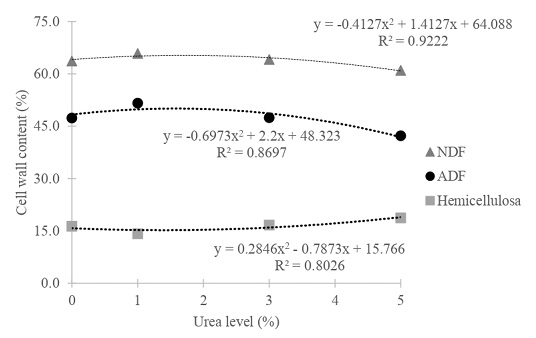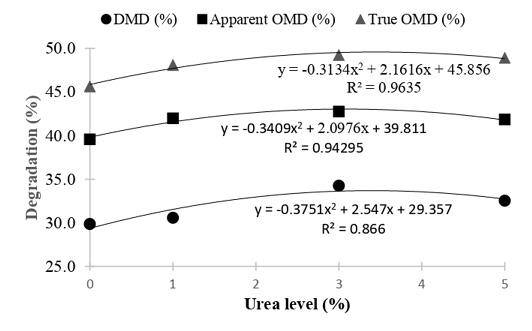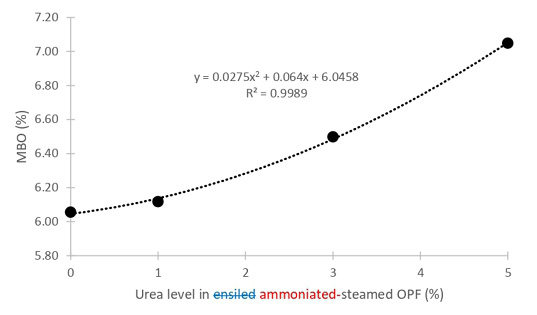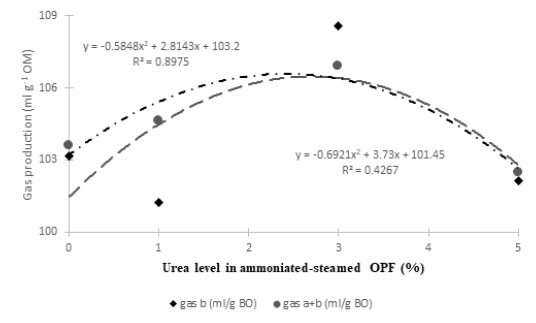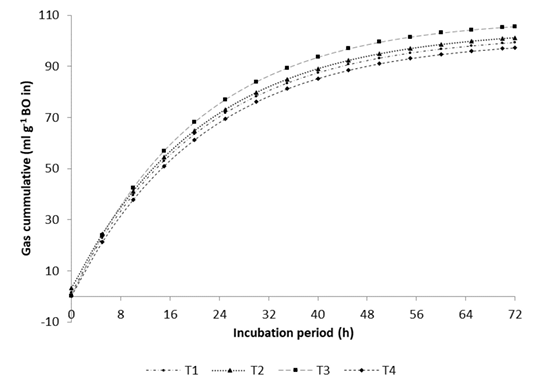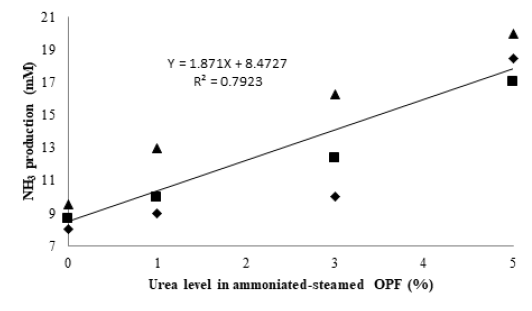Improving the Nutritional Value and Rumen Fermentation Profile of Oil Palm Fronds by Autoclaving and Ammoniation with Different Levels of Urea
Improving the Nutritional Value and Rumen Fermentation Profile of Oil Palm Fronds by Autoclaving and Ammoniation with Different Levels of Urea
Saitul Fakhri1*, Heni Suryani2, Teja Kaswari1, Munawwaroh Pane1, Neneng Hariyati1, Dodi Rolis Limbong1, Anuraga Jayanegara3, Daniel Komwihangilo4
Cell wall compositions of ammoniated-steamed OPF with varies of urea (% DM).
Relationship between urea level in ammoniated-steamed OPF and rumen degradation at 72 h post-incubation.
Relationship between urea level in ammonitated-steamed OPF and MBO at 72 h post-icubation.
Graphic representation of gas production profile of b and a+b as a function of urea level.
Gas production profile of each treatment during the 72-hour incubation period.
Relationship between urea levels in ammoniated-steam OPF and rumen NH3 concentration after incubation with buffered rumen fluid for 72h.




